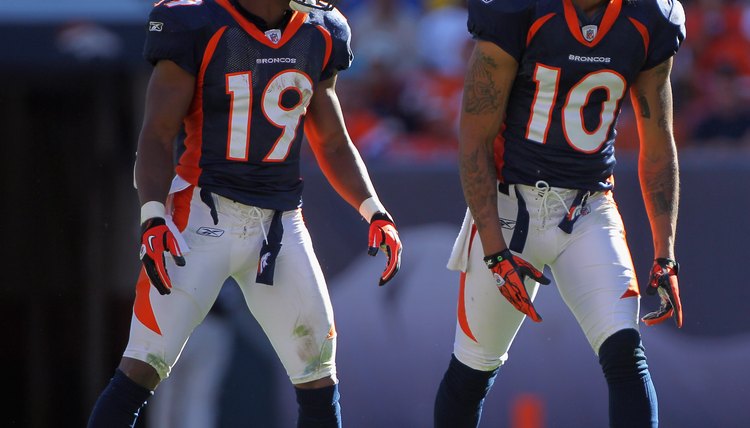How to Defend a Flooded Zone in Football

In zone coverage in football, defenders are responsible for areas of the field, rather than following a specific receiver wherever he goes. Offenses frequently attack these defenses by flooding a zone -- sending three receivers into an area covered by two defenders, for example, leaving one receiver undefended. Any football team that employs zone coverage must be prepared to counter the offense’s attempt to overload one part of the field with multiple receivers.
Disguising Coverages
The first defense against flooded zones is to make sure the offense doesn’t know what type of defense you’re running until the play begins. Defenses may employ different coverages for the same down-and-distance situation throughout the game. Defensive players will also try to avoid tipping their hands before the snap, lining up in a way that doesn’t reveal whether they’re playing zone or man-to-man coverage.
Audibles
If the offense shows its colors before the snap -- sending three wide receivers to one side of the field, for example -- the defense must read the formation and adjust its coverage accordingly. For example, if a Cover 2 defense was called in the huddle -- with two deep safeties in the middle of the field -- the defense might switch to Cover 3, spreading three defenders across the field in deep zones. One player, typically a safety, should be responsible for reading the offensive formation and calling an audible, if necessary, before the snap.
Push Technique
Sometimes the offense will disguise its intention to flood a zone. In these cases, defenses must adjust on the fly. It’s important to have a prearranged signal so the designated player can verbalize the call with one or two words. For example, if an offense lines up two receivers to its right, then sends two backs to the right at the snap, a linebacker toward the left side of the field may rotate to the right to beef up the pass coverage. He’ll yell the appropriate signal to a linebacker playing a middle zone, telling him to push forward to cover a wider zone. The initial linebacker then shifts to cover the vacated middle zone.
Defending Both Sides
Just because an offense floods a zone to one side of the field doesn’t mean it’ll always throw the ball to the flooded side. If the defense leaves just one player covering a single receiver on the opposite side of the field, for example, the offense may be able to create a mismatch on that side. When a running back sets up toward the one-receiver side of the field, a linebacker will typically drift to that side to cover the back, should he run a pass route.
Blitz
Rather than adjust its pass coverage, the defense may counter with an overload of its own. If the offense spreads five receivers, for example, only five blockers remain to protect the quarterback. The defense can then adjust its zone or switch to man-to-man coverage and rush six players on a blitz, meaning one rusher will be unblocked.
References
Writer Bio
M.L. Rose has worked as a print and online journalist for more than 20 years. He has contributed to a variety of national and local publications, specializing in sports writing. Rose holds a B.A. in communications.
